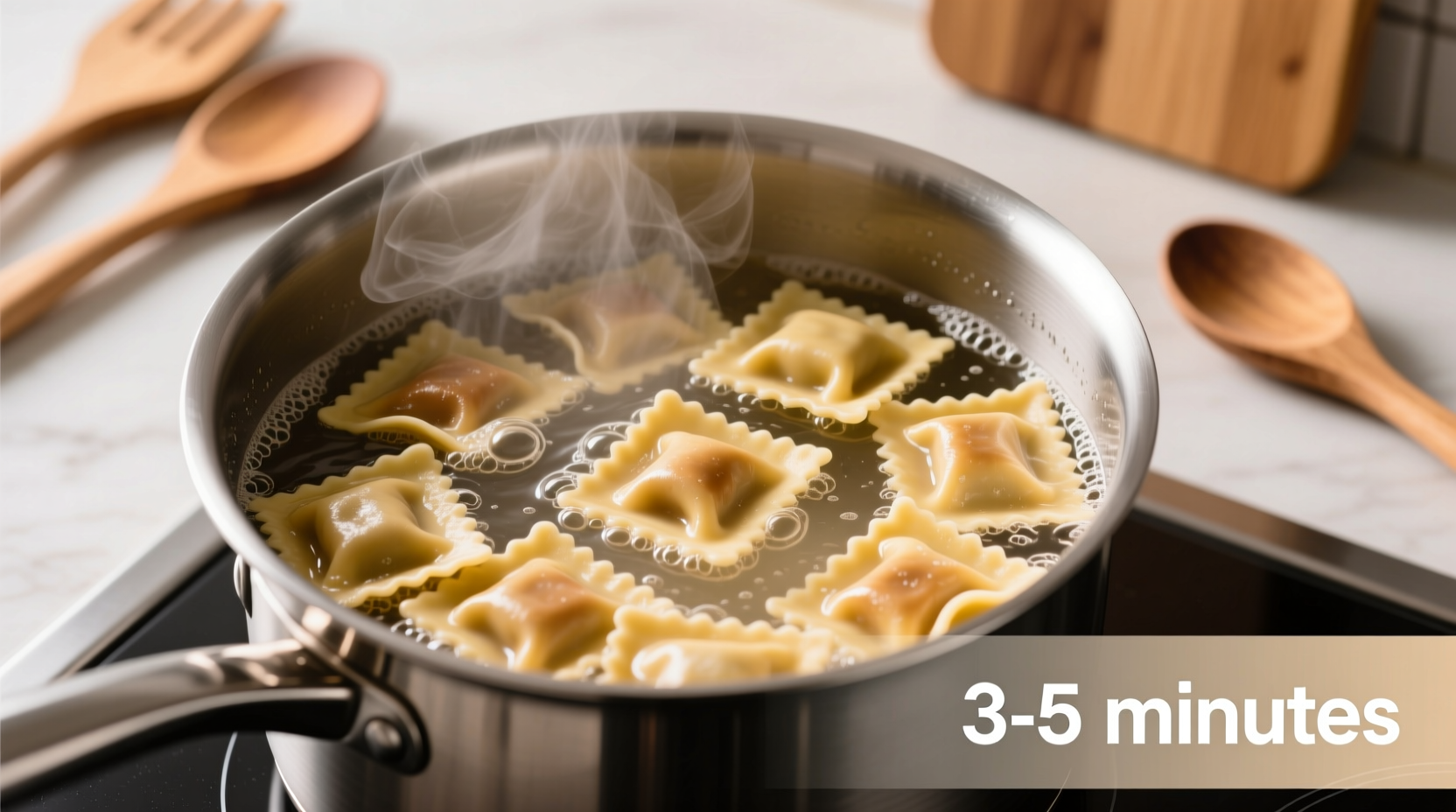Getting frozen ravioli perfectly cooked is simpler than you think, but timing is everything. Undercooked ravioli remains doughy and unpleasant, while overcooked pasta turns to mush and may burst open, spilling filling into your sauce. This guide delivers precise cooking times for every method so you can serve restaurant-quality ravioli every time—no guesswork required.
How to Tell When Frozen Ravioli Is Perfectly Cooked
Before diving into specific cooking methods, understand the universal signs of properly cooked ravioli:
- Float test: Most ravioli will float to the surface when nearly done
- Texture check: Should be tender but still slightly firm (al dente)
- Internal temperature: USDA recommends 165°F (74°C) for food safety with filled pasta
- Visual inspection: Edges become slightly translucent when done
Boiling Method: The Classic Approach
Boiling remains the fastest and most reliable method for cooking frozen ravioli. Follow these professional chef techniques for perfect results every time:
| Cooking Method | Time | Water Temperature | Key Indicator |
|---|---|---|---|
| Standard boiling | 4-6 minutes | Rolling boil | Floats + 1 minute |
| Gentle simmer | 5-7 minutes | Low bubble activity | No white core visible |
| Large batch cooking | 6-8 minutes | Moderate boil | Internal temp 165°F |
- Use a large pot with 4-6 quarts of water per pound of ravioli
- Add 1-2 tablespoons of salt to the water before heating
- Bring water to a rolling boil before adding frozen ravioli
- Gently stir immediately after adding to prevent sticking
- Reduce heat to maintain gentle boil after adding ravioli
- Set timer for 4 minutes (standard size) or 6 minutes (jumbo ravioli)
- Test one piece at minimum time before draining
- Drain immediately when done—don't rinse unless making cold salad
Pro tip: Add 1 tablespoon of olive oil to boiling water to prevent sticking, but avoid overdoing it as oil can prevent sauce from adhering later. For delicate filled ravioli like lobster or ricotta, maintain a gentle simmer rather than vigorous boil to prevent bursting.

Baking Method: Crispy Edges, Tender Center
Baking frozen ravioli creates delicious crispy edges while maintaining a tender interior. This method works especially well with cheese-filled varieties:
- Preheat oven to 400°F (200°C)
- Arrange frozen ravioli in single layer on baking sheet
- Lightly coat with olive oil or cooking spray
- Bake 10 minutes, flip carefully
- Return to oven for additional 10-15 minutes
- Check internal temperature reaches 165°F (74°C)
For baked ravioli in sauce (like in a casserole), increase cooking time to 25-30 minutes covered with foil, then remove foil for final 5-10 minutes to crisp the top. The USDA Food Safety and Inspection Service confirms that filled pasta must reach 165°F internally to ensure food safety, which typically requires the full recommended baking time.
Air Fryer Method: Quick Weeknight Dinner
Air frying frozen ravioli delivers restaurant-quality results in minutes. This method works best with square or round ravioli (avoid delicate shapes):
- Preheat air fryer to 375°F (190°C)
- Toss frozen ravioli with 1 tablespoon oil
- Cook in single layer (don't overcrowd)
- Air fry 4 minutes, shake basket gently
- Continue cooking 4-6 minutes until golden
- Serve immediately with sauce or dipping options
Important context: Cooking times vary significantly based on ravioli thickness and filling density. Meat-filled ravioli generally requires 1-2 minutes longer than cheese varieties. The FDA's Food Code specifies that cooked pasta dishes containing meat must reach 165°F internal temperature, which may add 1-2 minutes to standard cooking times.
Troubleshooting Common Ravioli Cooking Problems
Ravioli bursting during cooking: This usually happens when water is at too vigorous a boil or when ravioli is overfilled. Solution: Maintain gentle simmer and avoid overcrowding pot.
Ravioli sticking together: Frozen pasta sticks when added to insufficiently boiling water. Solution: Use ample water (4-6 quarts per pound) and stir immediately after adding.
Undercooked center: Common with jumbo or thick ravioli. Solution: Extend cooking time by 1-2 minutes and check internal temperature.
Expert Tips for Perfect Ravioli Every Time
- Salt water properly: Add salt after water boils to prevent pitting your pot, using 1-2 tablespoons per gallon
- Reserve pasta water: Save 1 cup before draining to help emulsify sauces
- Shock delicate ravioli: For restaurant-quality presentation, plunge cooked ravioli into ice water for 10 seconds then drain
- Sauce pairing: Match delicate fillings (like lobster) with light sauces, robust fillings (like meat) with hearty tomato sauces
- Batch cooking: When cooking multiple batches, keep finished ravioli warm in 200°F oven on baking sheet











 浙公网安备
33010002000092号
浙公网安备
33010002000092号 浙B2-20120091-4
浙B2-20120091-4